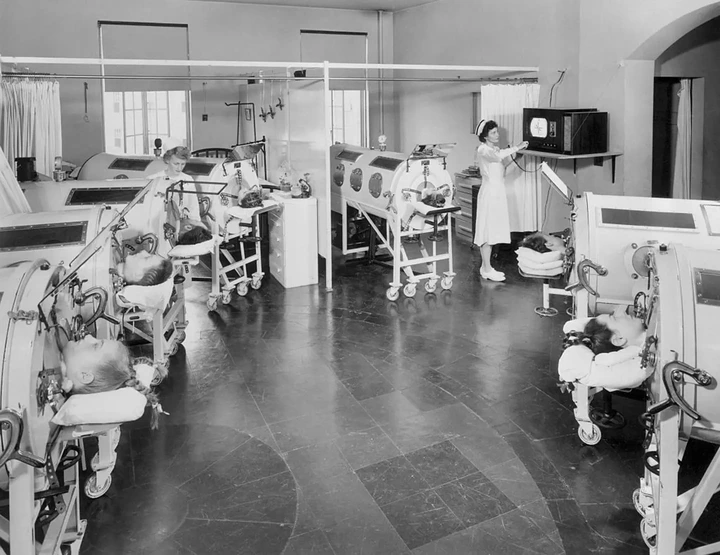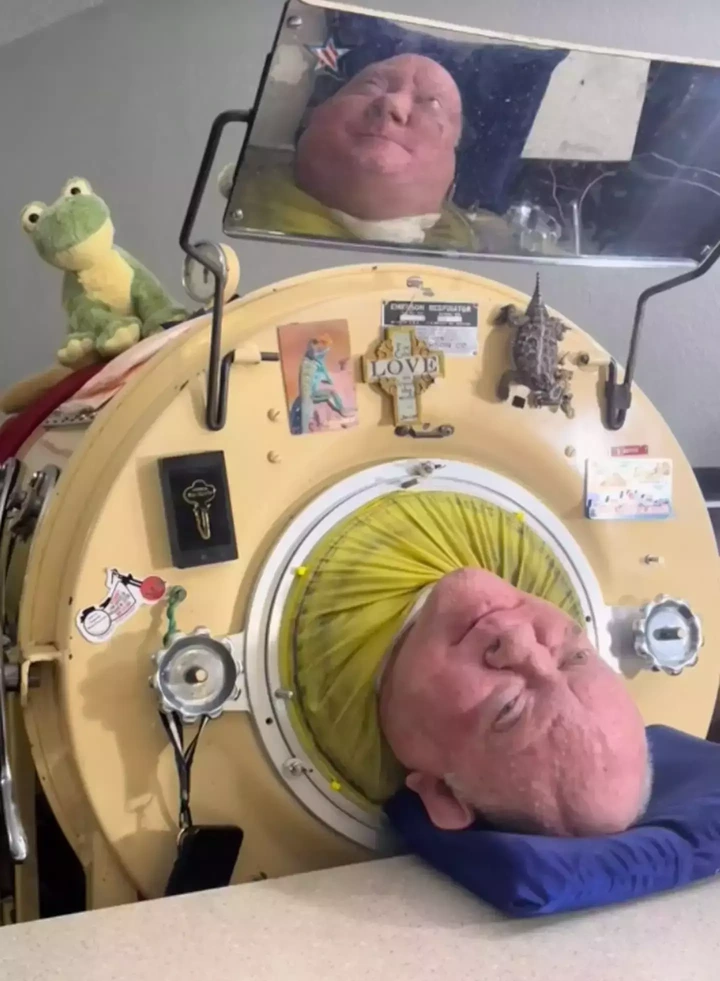This is the tale of Paul Alexander, a remarkable individual who spent more than 70 years of his life relying on an iron lung for his survival.

View pictures in App save up to 80% data.
Paul Alexander, known as 'the man in the iron lung', managed to survive for over 70 years within the medical device before passing away.
Polio may have been eradicated from most of the world nowadays, but in the not-so-distant past the disease caused devastation, with devastating epidemics occurring across the UK and US in the 1950s.

View pictures in App save up to 80% data.
Polio, or poliomyelitis, is a highly infectious viral disease caused by the poliovirus. It primarily affects young children and can lead to paralysis, muscle weakness, and in severe cases, death. The virus spreads through contaminated water, food, and direct person-to-person contact. Vaccination has been crucial in reducing the incidence of polio worldwide, making it a preventable disease. While there is no cure for polio, early detection and supportive care can help manage symptoms and complications.
Poliomyelitis - typically shortened to polio - is an infectious disease which is spread from person to person through contact with contaminated faeces. The majority of cases are asymptomatic however polio can cause flu-like symptoms such as muscle pain, headaches and sore throats.
In a limited number of instances, polio may lead to paralysis of the muscles, which can become life-threatening if it affects the muscles responsible for breathing.
Patients who experienced a loss of control over their respiratory muscles were treated using a medical apparatus known as an iron lung.
An iron lung functions by surrounding the entire body of the patient, except for the head, and employing changes in air pressure to replicate the natural movements of the diaphragm and chest muscles. This is achieved through a method known as External Negative Pressure Ventilation.
As time progressed, iron lungs were substituted with ventilators that operated on a system known as Positive Pressure Ventilation, which involves delivering air directly into a patient’s lungs via a tube.
Patients would stay inside an iron lung until they were able to breathe independently, which in the case of Alexander would last for over 70 years until his death on 11 March, 2024.

View pictures in App save up to 80% data.
At the age of six, Alexander was diagnosed with polio, which resulted in permanent paralysis affecting his entire body from the neck down.
Despite facing the challenges of contracting polio and experiencing paralysis, Alexander remained resolute in his desire to lead a fulfilling life. He eventually enrolled in university, pursued a law degree, and went on to publish a memoir.
Paul Alexander survived inside the iron lung due to a combination of medical technology and his own resilience. After contracting polio in the late 1950s, he was left unable to breathe on his own. The iron lung, a type of negative pressure ventilator, helped him breathe by creating a vacuum that caused his lungs to expand and contract. Throughout his life, he adapted to this unique way of living, developing skills to communicate and engage with the world around him despite his physical limitations. His strong will, determination, and support from family and caregivers played crucial roles in his survival and ability to thrive within the constraints of the iron lung. Additionally, advancements in medical care and technology over the years contributed to his overall health and well-being.
For the following 10 years after being paralysed, Alexander was unable to leave the iron lung - which meant that he was largely confined to a life indoors. However, he was eventually able to survive for extended periods of time outside of the device by practising a technique known as 'frog breathing'.
"The first day I was outside the house was extraordinary. It was a 100 percent improvement," Alexander recalled of the first day he was able to leave the iron lung, as per Rotary.
Commonly referred to as glossopharyngeal breathing, this technique involves utilizing the muscles of the mouth and throat to push air into the lungs. This method would aid him in his pursuit of becoming a lawyer, especially since he could not rely on the iron lung during his bar exam.
Prior to his death, Alexander explained what would happen in the event of his machine losing electricity, causing it to shut down.
"If the power goes out due to a severe storm, everything shuts down, including the iron lung, which relies entirely on electric impulses. Without electricity, it ceases to function, and that means I can’t breathe," he explained.
"For me, it's a matter of life and death; if it doesn't restart, then it's the end for me, as I can't survive for long on my own without the iron lung."
After the passing of Alexander, Martha Lillard, a woman from the United States, became the final individual to rely on an iron lung for her respiratory needs.










